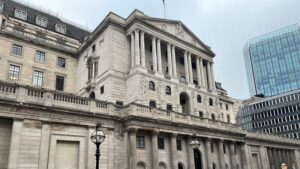The Bank of England has stepped in with additional measures to help money markets over a two-week period as Fitch Ratings shifts its outlook for certain funds invested in the asset class to negative.
While overall money market funds are facing record inflows as investors dash to cash, “low volatility net asset value” (LVNAV) money market funds have faced outflows, according to a note from Fitch stating its outlook within Europe for these type of money market funds had switched from stable to negative.
For example, sterling-denominated funds faced £16.6bn of outflows in the week ended 20 March and weekly liquidity values averaged 34%. That is down from 36% and 37% in the preceding two weeks and therefore creeping close to the 30% regulatory requirement.
Euro and US dollar-denominated funds were at 33% and 36% respectively in the latest weekly data.
Flows churn between different types of money market fund
Heightened outflows and volatility affecting mark-to-market net asset values were behind Fitch’s downgrade to its outlook.
It also highlighted credit deterioration of underlying issuers as a further risk to the funds.
In the US, flows have shifted from “prime” money market funds, which invest in assets such as commercial paper and are similar to the European LVNAV funds, to government money market funds.
Since 19 February, when markets peaked before the coronavirus sell-off, US government and treasury money market funds have collectively taken in $357bn while prime funds have shed $110bn, according to data from Northern Trust Asset Management and Crane Data Money Fund Intelligence Daily.
While figures from the Financial Times this week revealed flows across all money market funds had hit a record $95bn in the week ended 18 March, the LVNAV money market funds that were the focus on the Fitch note were in net outflows.
Backbone of MMF portfolios not covered by BoE measures
The Bank of England outlined a two-week measure to facilitate money markets mere hours before Fitch downgraded its outlook.
The so-called contingent term repo facility (CTRF) allows participants to borrow cash over a three-month period in exchange for collateral, the Bank of England confirmed on Tuesday afternoon. It would run alongside existing sterling market operations, notably the indexed long-term repo and discount window facility.
But money market funds are not eligible for the Bank of England measures, instead being reliant on the banks that are eligible, noted Fitch Ratings head of fund and asset manager ratings for Emea and Apac Alastair Sewell.
Additionally, while the facility covers some security types held by money market funds, such as government and agency securities and asset-backed commercial paper, it did not extend to bank commercial paper and certificates of deposit. These form the “backbone of MMF portfolios”, Sewell said.







